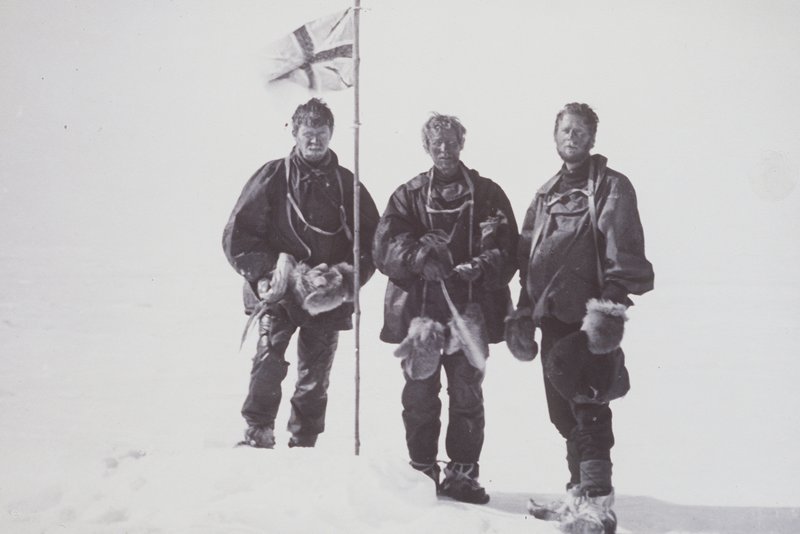|
Cape Blake
Cape Blake () is a rocky cape on the Organ Pipe Cliffs, 4 nautical miles (7 km) west of Cape Wild. Discovered by the Australasian Antarctic Expedition (1911–1914) under Douglas Mawson, who named it for L.R. Blake, geologist and cartographer with the Macquarie Island Macquarie Island is a subantarctic island in the south-western Pacific Ocean, about halfway between New Zealand and Antarctica. It has been governed as a part of Tasmania, Australia, since 1880. It became a Protected areas of Tasmania, Tasmania ... party of the expedition. Headlands of Wilkes Land {{WilkesLand-geo-stub ... [...More Info...] [...Related Items...] OR: [Wikipedia] [Google] [Baidu] |
Organ Pipe Cliffs
Organ Pipe Cliffs is a line of coastal cliffs in the form of palisades of columnar dolerite overlooking the sea to the west of Cape Wild. Discovered by the Australasian Antarctic Expedition (1911–1914) under Douglas Mawson, who named them because of the similarity of the rock structure to organ pipes. Landforms * Cape Blake Cape Blake () is a rocky cape on the Organ Pipe Cliffs, 4 nautical miles (7 km) west of Cape Wild. Discovered by the Australasian Antarctic Expedition (1911–1914) under Douglas Mawson, who named it for L.R. Blake, geologist and cartograph ... * Cape Wild References Cliffs of Antarctica Landforms of George V Land {{GeorgeVLand-geo-stub ... [...More Info...] [...Related Items...] OR: [Wikipedia] [Google] [Baidu] |
Cape Wild
Cape Wild is a prominent rock cape on the eastern end of the Organ Pipe Cliffs, 4 nautical miles (7 km) east of Cape Blake. This may be the cape viewed from the ship Superior Mirage, by the United States Exploring Expedition under Lieutenant Charles Wilkes, January 19, 1840. Wilkes applied the name " Point Emmons" for Lieutenant George F. Emmons of the Vincennes. The cape was accurately positioned by the Australasian Antarctic Expedition (1911–1914) under Douglas Mawson, who named it for Frank Wild John Robert Francis Wild (18 April 1873 – 19 August 1939) was an English sailor and explorer. He participated in five expeditions to Antarctica during the Heroic Age of Antarctic Exploration, for which he was awarded the Polar Medal ..., a member of the expedition and leader of the Australasian Antarctic Expedition Western Base Party. References Headlands of George V Land {{GeorgeVLand-geo-stub ... [...More Info...] [...Related Items...] OR: [Wikipedia] [Google] [Baidu] |
Australasian Antarctic Expedition
The Australasian Antarctic Expedition was a 1911–1914 expedition headed by Douglas Mawson that explored the largely uncharted Antarctic coast due south of Australia. Mawson had been inspired to lead his own venture by his experiences on Ernest Shackleton's ''Nimrod'' expedition in 1907–1909. During its time in Antarctica, the expedition's sledging parties covered around of unexplored territory, while its ship, , navigated of unmapped coastline. Scientific activities included meteorological measurements, magnetic observations, an expansive oceanographic program, and the collection of many biological and geological samples, including the discovery of the first meteorite found in Antarctica. The expedition was the first to establish and maintain wireless contact between Antarctica and Australia. Another planned innovation – the use of an aircraft – was thwarted by an accident before the expedition sailed. The plane's fuselage was adapted to form a motorised sledge or "air ... [...More Info...] [...Related Items...] OR: [Wikipedia] [Google] [Baidu] |
Douglas Mawson
Sir Douglas Mawson (5 May 1882 – 14 October 1958) was a British-born Australian geologist, Antarctic explorer, and academic. Along with Roald Amundsen, Robert Falcon Scott, and Sir Ernest Shackleton, he was a key expedition leader during the Heroic Age of Antarctic Exploration. Mawson was born in England and was brought to Australia as an infant. He completed degrees in mining engineering and geology at the University of Sydney. In 1905 he was made a lecturer in petrology and mineralogy at the University of Adelaide. Mawson's first experience in the Antarctic came as a member of Shackleton's Nimrod Expedition, ''Nimrod'' Expedition (1907–1909), alongside his mentor Edgeworth David. They were part of the expedition's northern party, which became the first to attain the South magnetic pole and to climb Mount Erebus. After his participation in Shackleton's expedition, Mawson became the principal instigator of the Australasian Antarctic Expedition (1911–1914). The expedit ... [...More Info...] [...Related Items...] OR: [Wikipedia] [Google] [Baidu] |
Macquarie Island
Macquarie Island is a subantarctic island in the south-western Pacific Ocean, about halfway between New Zealand and Antarctica. It has been governed as a part of Tasmania, Australia, since 1880. It became a Protected areas of Tasmania, Tasmanian State Reserve in 1978 and was inscribed as a UNESCO World Heritage Site in 1997. Macquarie Island is an exposed portion of the Macquarie Fault Zone, Macquarie Ridge and is located where the Australian Plate meets the Pacific Plate. The island is home to the entire royal penguin population during their annual nesting season. Ecologically, the island is part of the Antipodes Subantarctic Islands tundra ecoregion. History 19th century Frederick Hasselborough, an Australian, discovered the uninhabited island on 11 July 1810, while looking for new seal hunting, sealing grounds. He claimed Macquarie Island for United Kingdom, Britain and annexation, annexed it to the colony of New South Wales in 1810. The island was named for Colonel Lachla ... [...More Info...] [...Related Items...] OR: [Wikipedia] [Google] [Baidu] |

